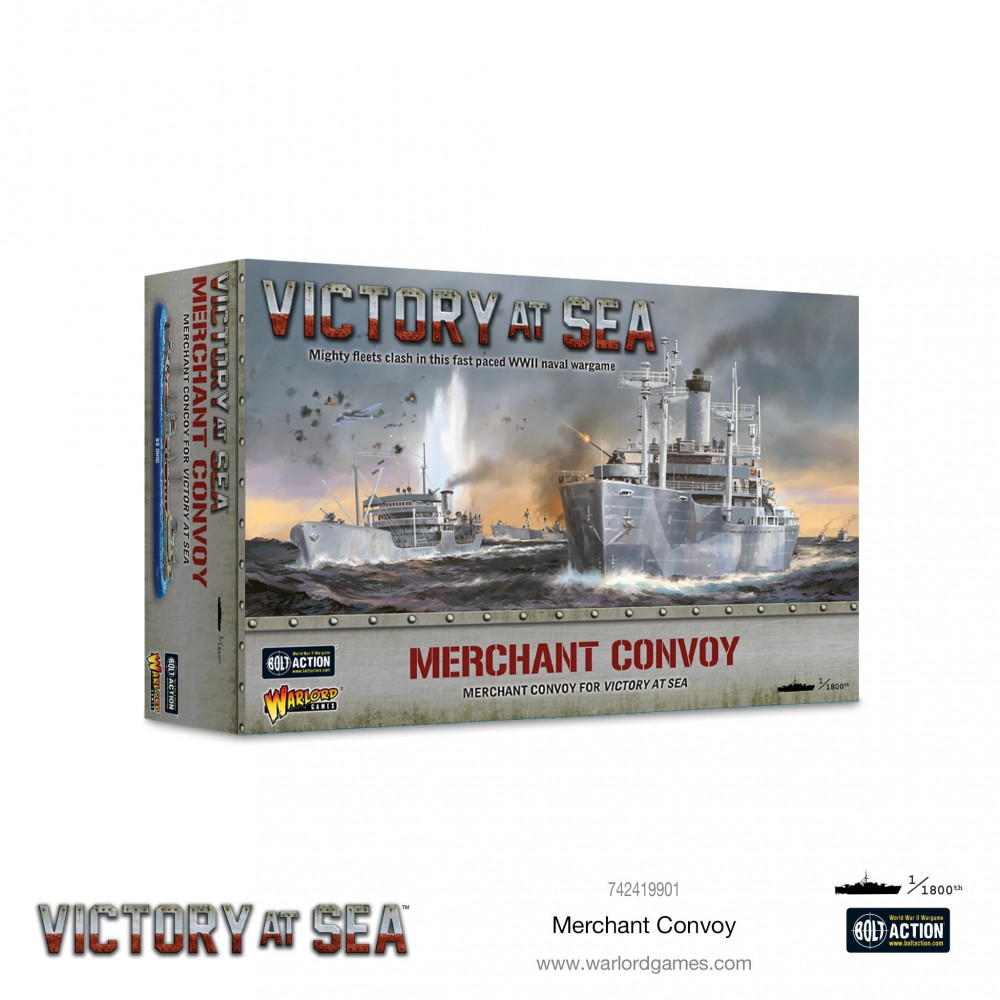- -15%




Free Local Delivery for Orders above $100
We accept Returns within 7 days. Click here for terms and conditions.
Payments via PAYNOW, GrabPay, Credit Cards or Paypal
Preventing attacks on defenceless merchant ships is the other main role of the navy, and it was her that the war was fought, day in and day out, by the humble corvette, frigate and destroyer escort, and later by escort carriers. Commerce raiding formed a critical part of the strategy for several nations – Germany’s Kriegsmarine almost brought Britain to her knees whilst the US Navy similarly strangled Japan’s movement of industrial goods, materials, troops and supplies.
Grouping ships into convoys meant there was more expanse of empty ocean out there – hopefully raiders would not even find the convoy. It also made escorts more effective, but in the event a convoy was hit by a surface raider, such as a heavy cruiser or battlecruiser, the target would be devastated in short order. Nevertheless, the convoy system helped a great deal. It would fall to the escorting ships to defend them until either a heavy covering force could come up in support or the merchants could make their escape. Some of the most heroic, and worst mismatched, actions of the war took place in defence of merchants convoys or troop ships.
Box contains:
Product |
 Merchant Convoy
Merchant Convoy
|
 Battle for the Pacific - Victory at Sea starter game
Battle for the Pacific - Victory at Sea starter game
|
Availability |
|
|
Price |
SGD$135.00
-15%
SGD$114.75
|
SGD$141.00
-10%
SGD$126.90
|
Description |
Victory at Sea is the game of naval combat during the Second World War. Throughout 1939–45, the nations of the world duelled across the oceans across the globe, only to discover the fundamental nature of naval warfare changing in the face of rapidly developing technologies. |
|
| No features to compare | ||
|
|
|
|
The Imperial Japanese Navy fielded a number of variants on a standard torpedo boat design, differing mainly in machinery fit which affected displacement, giving the illusion of more variety than existed in practice. 238 boats were built within these designations, all armed with two 18-inch torpedoes and 25mm or 13.2mm guns.
USS Idaho, the third of three ships of the New Mexico-class of Battleship, was the fourth vessel to bear the name. She was launched in June 1917 and commissioned in March 1919. She was armed with a battery of twelve 14” guns in four turrets and was protected with heavy armour plate (13.5” thick in the main belt).
Submarines: Compared to a German Type VII C submarine, the Marcello-class were much larger, displacing 1,060 tons versus 769.
Although the United States of America contains a vast area of land, almost all of its allies and trading partners are overseas, and those interests require a powerful navy to support them.
Victory at Sea is the game of naval combat during the Second World War. Throughout 1939–45, the nations of the world duelled across the oceans across the globe, only to discover the fundamental nature of naval warfare changing in the face of rapidly developing technologies.
Originally laid down as an Amagi-class battlecruiser, the stipulations of the Washington Treaty resulted in her conversion to an aircraft carrier. As a result, Akagi (赤城, "Red Castle") was one of Japan’s first large aircraft carriers.
11At the time of Italy’s entry into World War Two, she possessed a modern and – on paper at least – highly effective fleet.
The Yorktown-class of aircraft carrier were built in a series of three. Of those, only the USS Enterprise survived the war, with the USS Yorktown sunk during the Battle of Midway, and the USS Hornet during the Battle of Santa Cruz.
1As well as fuel, armies and navies need enormous amounts of ammunition in order to function. Ammunition ships were vital to the war effort, but also posed a severe risk to their own forces close by due to the explosive nature of their cargo.
Contains one resin & metal vessel with ship card. (Warlord Games Made to Order)

